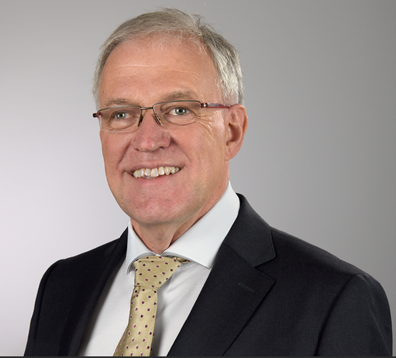MAE Department - PG Seminar - Love Wave Surface Acoustic Wave Magnetic Field Sensors
Supporting the below United Nations Sustainable Development Goals:支持以下聯合國可持續發展目標:支持以下联合国可持续发展目标:
Acoustic wave sensors have proven to be powerful devices for the detection and quantification of different physical parameters. Love-wave sensors as a special type of surface acoustic wave (SAW) sensors use shear horizontal waves guided in a layer on the surface of the sensor which increases the surface sensitivity for the quantities to be measured at this surface. The principle of the magnetic field sensor is based on the change of the elastic properties of magnetostrictive materials in magnetic fields, the so-called E effect. The Love wave SAW sensor uses shear horizontal acoustic surface waves that are guided by a fused silica layer with an amorphous magnetostrictive single or exchange biased multilayer [1] film on top. The velocity of these waves follows the magnetoelastically-induced changes of the shear modulus according to the magnetic field present. The SAW sensor is operated in a delay line configuration and translates the magnetic field to a related phase shift [2].
These magnetoelastic SAW devices show great potential as sensors of low frequency and extremely low amplitude magnetic fields like those found in biomagnetic applications. While these sensors provide adequate frequency bandwidth for most applications, their detectability has found its limitation in the low frequency noise generated by the magnetoelastic film. Amongst other contributions, this noise is closely connected to domain wall activity evoked by the strain from the acoustic waves propagating through the film [3]. A successful method to reduce the presence of domain walls, is to couple the ferromagnetic material with an antiferromagnetic material across their interface and therefore induce an exchange bias, which is unidirectional in nature. Using a top pinning exchange bias stack consisting of ferromagnetic layers of (Fe90Co10)78Si12B10 and Ni81Fe19 coupled to an antiferromagnetic Mn80Ir20 layer, the exchange bias is set directly by a magnetic field applied during the deposition of the films without any post-deposition heat treatment. Additionally, stray field closure and hence prevention of magnetic edge domain formation is achieved by an antiparallel biasing of two consecutive exchange bias stacks. The set antiparallel alignment of magnetization provides a single domain state over the complete film [4]. This results in a reduction of magnetic phase noise and therefore provides limits of detection as low as 28 pT/Hz1/2 at 10 Hz and 10 pT/Hz1/2 at 100 Hz, a factor of 2.5 lower than comparable non-exchange biased sensors [5,6].
[1] Lage, E.; Kirchhof, C.; Hrkac, V.; Kienle, L.; Jahns, R.; Knöchel, R.; Quandt, E. und Meyners, D.: Exchange biasing of magnetoelectric composites, Nature Materials 11 (2012), 523-529, DOI: 10.1038/NMAT3306.
[2] Kittmann, A.; Durdaut, P.; Zabel, S.; Reermann, J.;, Schmalz, J.; Spetzler, B.; Meyners, D.; Sun, N.X.; McCord, J.; Gerken, M.; Schmidt, G.; Höft, M.; Knöchel, R.; Faupel, F.; Quandt, E.: Wide Band Low Noise Love Wave Magnetic Field Sensor System, Scientific Reports (2018), 8:278, DOI: 10.1038/s41598-017-18441-4.
[3] Müller, C.; Durdaut, P.; Holländer, R. B.; Kittmann, A.; Schell, V.; Meyners, D.; Höft, M.; Quandt, E.; McCord, J.: Imaging of Love Waves and Their Interaction with Magnetic Domain Walls in Magnetoelectric Magnetic Field Sensors, Advanced Electronic Materials 8 (2022), 2200033, DOI:10.1002/aelm.202200033
[4] Jovičević Klug, M.; Thormählen, L.; Röbisch, V.; Toxværd, S. D.; Höft, M.; Knöchel, R.; Quandt, E.; Meyners, D.; McCord, J.: Antiparallel exchange biased multilayers for low magnetic noise magnetic field sensors. Applied Physics Letters 114 (2019), 192410, DOI: 10.1063/1.5092942.
[5] Schell, V.; Müller, C.; Durdaut, P.; Kittmann, A.; Thormählen, L.; Lofink, F.; Meyners, D.; Höft, M.; McCord, J.; Quandt, E.: Magnetic anisotropy controlled FeCoSiB thin films for surface acoustic wave magnetic field sensors, Appl. Phys. Lett. 116 (2020), 073503, https://doi.org/10.1063/1.5140562.
[6] Schell, V.; Spetzler, E.; Wolff, N.; Bumke, L.; Kienle, L.; McCord, J.; Quandt, E.; Meyners, D.; Exchange Biased Surface Acoustic Wave Magnetic Field Sensors, Scientific Reports 13, 8446 (2023), https://doi.org/10.1038/s41598-023-35525-6

Prof. Dr.-Ing Eckhard Quandt is an accomplished physicist and materials scientist with a distinguished career in research and leadership. He is a Professor and Director at the Institute for Materials Science at Kiel University, Germany, and serves as the Vice President of the University of Kiel for research and knowledge transfer. He is a member of Acatech, the German National Academy of Science and Engineering, and has published over 200 papers in top-tier journals on smart materials and multiferroics.